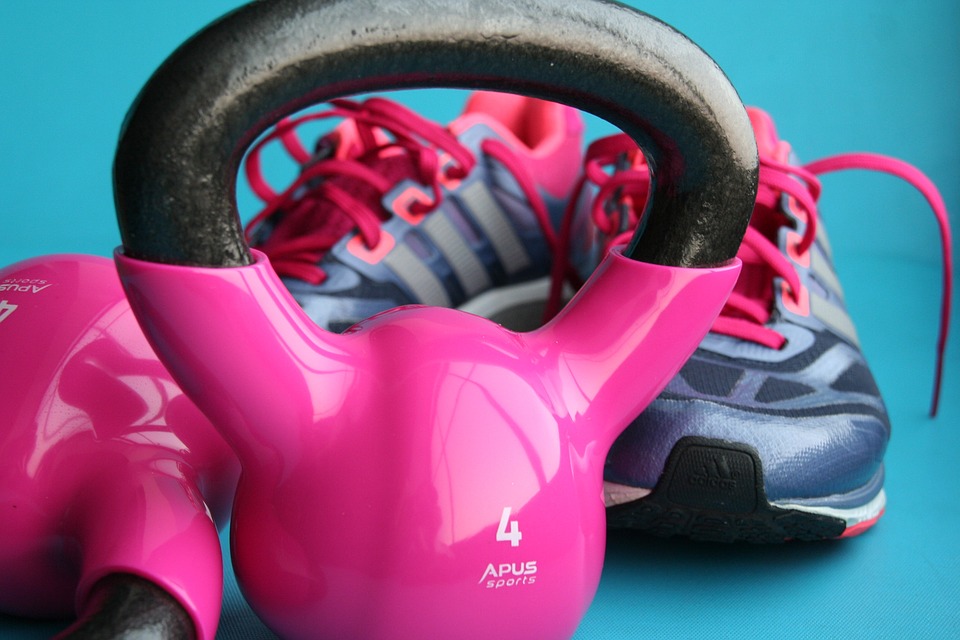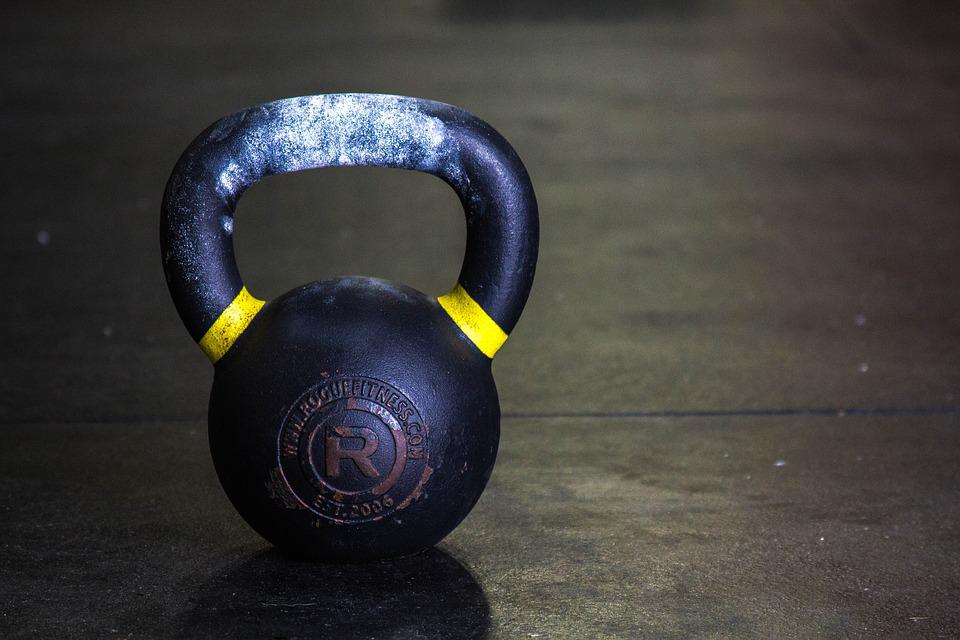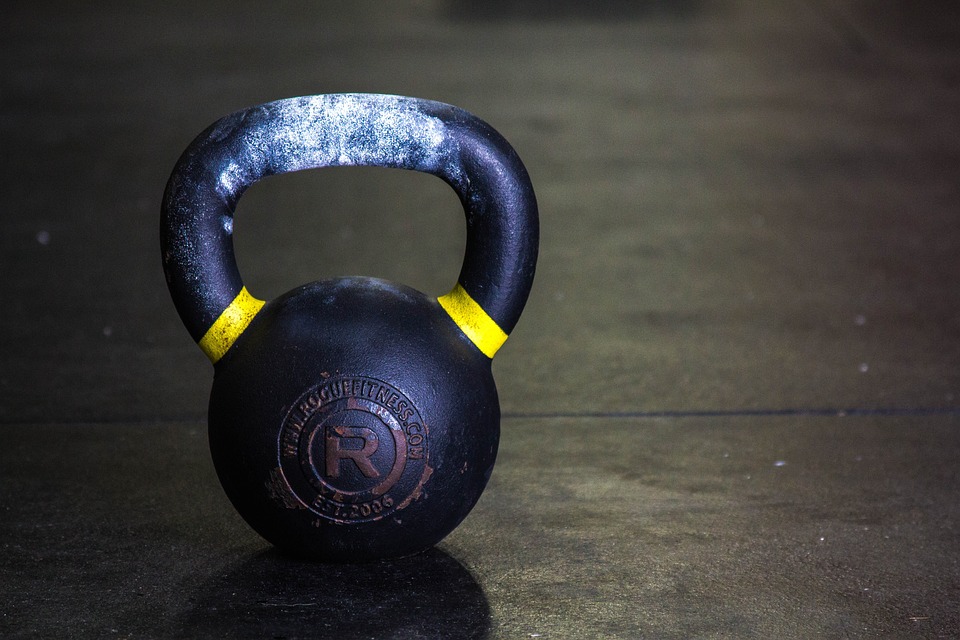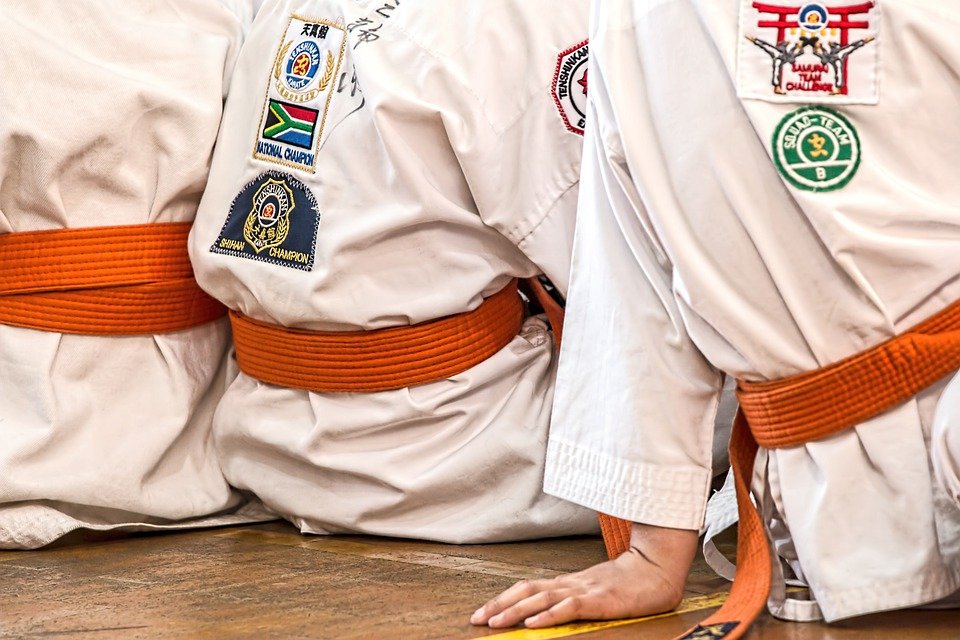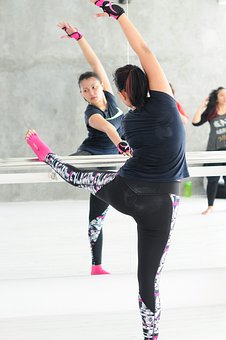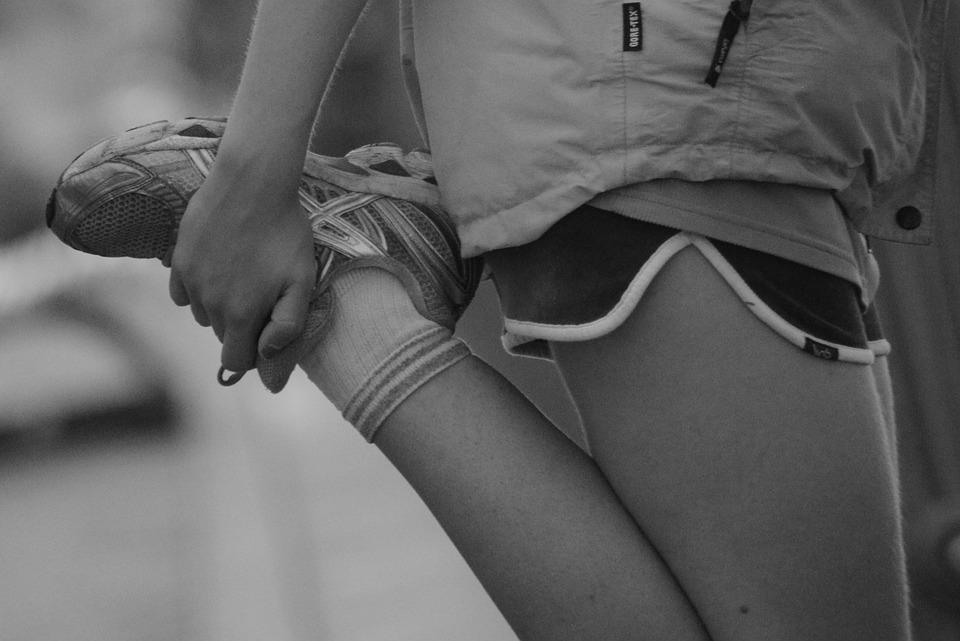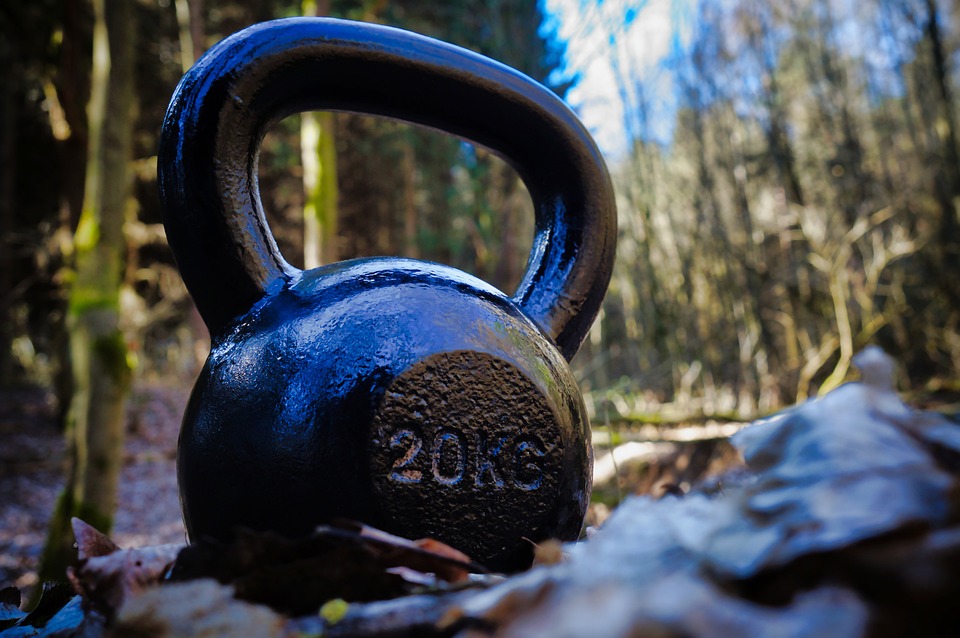
When you see kettlebell masters like Eric Leija, it’s easy to get inspired. A kettlebell flow that is well-ordered can be as beautiful and sophisticated as a ballet or a choreographed fight scene in a blockbuster action movie. Although it may seem like Eric Leija is an expert at what he does, it’s important to remember that he too had to start somewhere. You need to master the basics of kettlebells to become good at them and to develop the muscle strength, power, and athleticism that comes with them.
Benefits of Kettlebell Workouts
If you are unsure of the benefits of training with a kettlebell, here is a list of its advantages.
Good Form
Kettlebell training builds muscle and strength like any other type of resistance training, making it especially useful for developing body awareness and good movement skills, which will be beneficial for any other type of training or athletic activity.
The reason why lies in the kettlebell’s design. The weight of the bell is displaced six to eight inches away from the handle which makes it more difficult to control than other training devices. Almost any exercise you do is going to require you to keep a stricter form in order to perform it correctly. Your body will have to activate the more overall muscle to get it done.
Imagine a kettlebell overhead press. The weight of the object hanging from the handle will cause your arm to drift backward as you try to press it down. To press the weight straight up, you need to concentrate on controlling your shoulder as much as possible. This not only builds bigger and stronger shoulders but also improves your ability to press your shoulders.
Most kettlebell exercises expose your weaknesses right away. When you press and feel your lower back hyperextend and your ribs flare, it means you need to focus on keeping your core tight. You may also need to do extra shoulder and T-spine mobility training. Many people allow their chests to fall forward, knees to cave inward, and heels to come off the floor when they do barbell back squats. A correct rep of a goblet squat with a kettlebell is easy to see and feel, as opposed to a sloppy one.
Core and Grip Strength
The kettlebell’s design ensures that any exercise you do will be a core exercise, as your core keeps your whole body from getting pulled out of alignment. The kettlebell’s handle is less accommodating than a dumbbell’s, so your grip/forearm muscles will have to work harder. This makes kettlebells great for building an iron handshake and the ability to hold on tight.
Improved Athleticism
Almost no exercises that involve only one muscle group can be done with a kettlebell. Most movements you’ll do will train your whole body, teaching it to work as a unit. This is beneficial as it will help you when playing a sport. Kettlebells help with explosive movements such as swings and cleans, which develop power. This is especially helpful for the hips, which are key for jumping and running. Kettlebells allow you to train in multiple movement planes, preparing you for similar mechanics and changes of direction used in sports. Exercises can be strung together, as in a kettlebell flow, to practice being explosive and strong in all directions – a feature you wouldn’t get with barbells and dumbbells.
Kettlebell coaches have known for years what research is beginning to catch up with. Kettlebell training is safe and effective for boosting functional strength and power and may improve postural control as well, according to a review of five studies in Physical Therapy Reviews. A different study from the Journal of Strength and Conditioning Research found that a kettlebell workout burned more calories than a sprint cycling session, making it a more desirable and sustainable cardio option for many people.
The study found that the group improved their aerobic capacity by 6.8 percent and their anaerobic capacity by a whopping 15 percent. An American Council on Exercise study found that people who did an eight-week kettlebell program improved their aerobic capacity by 6.8 percent and their anaerobic capacity by 15 percent. Not only did they gain strength, but they also improved aerobic capacity and dynamic balance. According to lead researcher John Porcari, you don’t usually do resistance training expecting it to improve your aerobic capacity. However, with kettlebells, you can get many benefits from just one intense workout.
Efficient Training
You only need one or two kettlebells to get a full-body workout. According to John Wolf, who is the Chief Fitness Officer at Onnit, there is a large selection of exercises that can be done with only one weight. I’ve always said that if you have a kettlebell in the corner of your room, you can still work out and get a lot of use out of it.
What Muscles Do Kettlebells Work?
Kettlebell training is effective because it works all the muscles. In a well-balanced kettlebell workout, you don’t need to worry about not working out a particular muscle group because you will cover them all. Kettlebell training is more demanding on your core and grip muscles, so you will see results in your abs and forearm muscles no matter what exercises you perform.
A good kettlebell workout should include exercises that work the whole body, including the legs, hips, arms, and core. These movement patterns also help to improve balance and coordination. This means you will work every large muscle group in your body. To be more exact, we will go over what each movement trains one at a time.
The muscles most responsible for moving the arm are the deltoid, biceps, triceps, and pectoral muscles. The muscles that are most responsible for moving the arm are the deltoid, biceps, triceps, and pectoral muscles. There is a lot of similarity between movements. This text is saying that some exercises work the same muscles as others, so to avoid repeating themselves, they list the muscles that are primary targets for each movement pattern only.
Squatting
– Quads
– Inner thigh (adductors)
Hinging
– Glutes
– Hamstrings
– Lower back (spinal erectors)
– Core (rectus abdominis, transverse abdominis)
Pressing
– Shoulders (anterior and lateral deltoids)
The chest, particularly the upper chest, or the clavicular head, is an important area of the body.
– Triceps
Rowing
– Shoulders (rear deltoid)
– Upper back (trapezius, rhomboids, lats, teres major)
– Biceps
– Forearms (brachioradialis, wrist flexors)
Rotation
– Core (obliques)
What Is a Kettlebell Flow?
You lift the weight once and then perform two or three (or more) exercises without putting the weight down. A common kettlebell movement is a one-handed swing, which can be followed by a snatch, and then an overhead squat. The weight of the kettlebell will then shift back to the center of your body, at which point you will reverse the direction of your hands and begin the exercise again. You keep the kettlebell moving the whole time and don’t put it down.
A four-move kettlebell flow consists of four moves: a single-arm kettlebell swing a clean front squat to an overhead press. One rep equals one double kettlebell deadlift to a clean to a snatch. The second flow is generally considered more complex, even though it has fewer moves. The reason for this is that the movement involves two kettlebells instead of one, meaning that you are coordinated with more weight. The kettlebell snatch is also included in the movement.
Why Perform a Kettlebell Flow
The kettlebell flow is a type of workout that can help improve your cardiovascular health, muscle endurance, and general strength. You will move through several exercises in just one repetition, thus getting the most value for your money.
Don’t love the treadmill? No problem. Kettlebell flows will increase your cardiovascular fitness as you will be continuously moving without resting. Want to be able to lift heavier weights? Kettlebell flows help improve your form by forcing you to practice under difficult physical conditions. If you take short breaks between sets, you’ll be able to move more quickly and lift more weight when you return to the barbell.
As you begin to add kettlebell flows to your workout routine, you will start to see an increase in your grip strength. Since you’ll never put the bell down between complex transitions and lifts, your grip will get stronger from all the gripping it has to do. And yes, that translates into more powerful deadlifts.
How to Do a Kettlebell Flow
Step 1: Learn Your Moves
First things first: know your kettlebell moves. Do not try to do a kettlebell flow until you are able to do each part perfectly. Never quite got the hang of single-arm kettlebell swings? Master them before trying a complex that includes them.
It is especially important to be careful when performing kettlebell flows, as even one repetition of the flow is very tiring. Your heart rate will be high and your whole body will be active, so it will be easy for your form to break down. When you are doing a complex movement within your flow, it is especially important to be aware of your surroundings.
Step 2: Design Your Flow
The goal is for your dance moves to appear effortless and natural by linking them together smoothly. A deadlift before a high pull is good mechanically because the weight goes up from the floor in a line that is straight up to face level. Although a kettlebell swing into an upright row is technically possible, it is important to remember that there is a lot of momentum involved in this move which can be difficult to stop. Additionally, this move may not be suitable for people with back problems. A kettlebell swing that stops abruptly followed by a row would be more effective – it would still be difficult but would put less pressure on your body.
Consider the movements you want to make and arrange them in a thoughtful and logical order.
Step 3: Practice With Your Body
After you have learned the basics and can do all the moves with a lightweight, you can start practicing without a kettlebell. Begin by drawing neural pathways for the movement using only your body weight. You may feel silly at first, but it will be worth it. It will be much easier to master the flow if you prime your body as specifically as possible for the moves you’re about to tackle.
Step 4: Select Your Weight
Start with a weight that is much lighter than you think you will need. No matter how much you think you have the sequence of the exercise in your head, it is always going to take some brainpower to teach your body to do it smoothly.
As you are working out the details, you will be happy with a lighter weight. Keep in mind that the lightest weight you use will limit how much weight you can use in any situation. So, even if you can front squat a lot of weight, you need to consider how much weight you can overhead press when choosing your weight.
Step 5: Get To Work
After completing a few reps of exercises without any weight, increase the difficulty of the exercise in the same way you would if you were using a barbell. You should use a very light kettlebell so you can flow through two or three reps. Use a lighter weight if you are new to the flow. Otherwise, rest, select the next weight up, and continue.
A kettlebell flow is a type of workout that uses a kettlebell. Just perform each move in turn. The flow is a single-arm kettlebell deadlift into a row into a clean and press. First, set yourself up for a single-arm kettlebell deadlift. Perform that lift. To perform a single-arm kettlebell row, lockout at the hips and hinge immediately.
Once you complete the first movement, shift your weight as needed to prepare for the next movement, which is exploding into a press. All of that constitutes one rep. Bring the kettlebell to the starting position, then lower it to the ground. It is important to make sure that you keep everything balanced on both sides.
How to Program Kettlebell Flows
This means that you can use kettlebells for a variety of different exercises in your workout routine.
For Your Major Lifts
If you’re a kettlebell enthusiast, you might want to design a training regimen where kettlebell flows are the primary exercise. This means that you should take extra care to make sure your flows are well-balanced. To lift the heaviest weight possible, focus your workout on only your lower body so you can safely use heavier weights. In addition to overhead presses, you should also do rows, deadlifts, and high pulls to balance out the amount of pulling you’ll likely do.
It is okay to keep your repetitions low. Two or three reps are respectable. A set of five repetitions is very high, especially if your routine is complex and has a lot of different moves. This means that if you can complete five reps of a four-move kettlebell flow, you have completed 20 reps of work.
For a Warm-Up
Consider adding light kettlebell flows to your dynamic warm-up if you still use barbells as your main form of movement. If your workout will be focused on your upper body, you might want to do a workout with a lot of upper body pulling and pressing, such as high pulls, cleans, and presses. For lower-body workouts, warm up with lower-body-intensive flows.
For a Finisher
You can use kettlebell flows as finishers at the end of your workout. You can use heavier weights for this exercise since you won’t get exhausted before the day’s main lifts.

